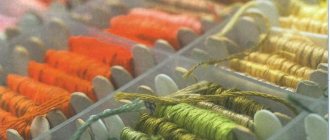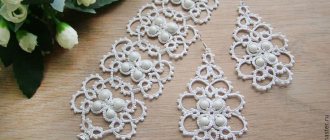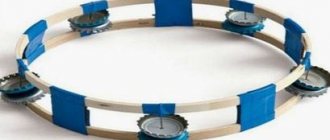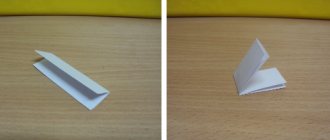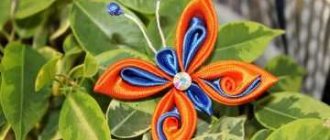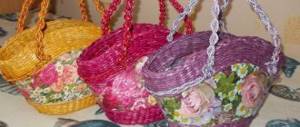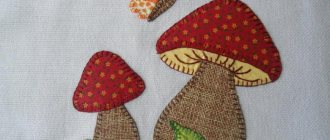Soutache embellishments include loops, swirls and beads. Therefore, all together it creates bright, light, unique and stunning jewelry. Some artists' work in this environment is a vibrant burst of joy and radiates bliss. Other artists use soutache to create unique, eerie masterpieces. In other words, no matter what your personal style is, as long as you can express it through this beautiful art.
Origami for beginners
This skill is reminiscent of a magic trick - a beautiful figure is born from a simple leaf in a few minutes. The activity does not require large material costs and is absolutely safe even for small children. Origami allows you to create a whole world without special abilities.
This hobby develops spatial imagination, fine motor skills, motor and spatial memory, concentration, communication and gaming abilities, horizons, and creative skills in beginners.
The paper diagrams below will help you make original, unusual toys, gifts, and figurines.
What materials will be needed
Before you start doing origami, you should stock up on the necessary set of tools. First, you should choose paper, preferably office paper, since it is not too smooth and is thick enough for folding according to patterns.
To attach small parts and gluing, you will need a glue stick or PVA glue, and aerosol glue is necessary if you need to glue two different-colored sheets of paper.
The last technique allows you to create interesting crafts using a combination of textures and colors.
You can use a more convenient adhesive mass, with which any part can be easily attached inside or outside the craft, and then removed if necessary, without leaving any traces.
If the craft is made from white paper, then it is then covered with spray paint. Sometimes several pairs of sharp scissors with blades of different shapes and lengths are required. In some cases it is possible to replace them with a cutter.
This tool is necessary for trimming and cutting straight lines. The blade must be sharpened to obtain a smooth, neat cut.
To mark according to the diagram when folding figures, cutting out the base, maintaining a certain angle of assembly, and symmetrically placing a composition based on a panel, triangles, rulers, and protractors are needed.
You will need a mechanical pencil with a replaceable thin lead.
Additionally, needlewomen use ready-made eyes for toys, leftover yarn, ribbons, fabric, beads, seed beads, sequins for decoration, and thread and needle for connecting individual parts.
Paper selection
The result of the work depends on the correct choice of paper, since the entire process of creating origami according to patterns consists of folding and bending. The list below will help you decide which material is better and which is worse suitable for this type of needlework:
- Office white paper is thick, not too smooth, so the modules hold well when connected. It’s better to start practicing origami with such material, since it’s a shame to throw away a damaged model. Its disadvantage is that hairiness appears at the bend.
- Colored office paper - does not turn white when folded, is dense, and is used in modular origami.
- Stickers, note paper - can be painted in different colors, used to create kusudama, in modular origami.
- School colored paper is thin, friable, easily torn, and not suitable for this hobby. It wears off on the folds and white stripes appear.
- Foil paper is durable, does not tear, is used when creating complex patterns, twisted models, and modules. When straightened, the folds remain in tight stripes.
- The pages of glossy magazines are dense, bend well, and hold their shape.
- Banknotes are durable, do not wear out on folds, and are suitable for small modules and making gifts.
- Special paper for origami - sold in sets, with a variety of patterns, can be double-sided, monotonous.
- Rice, papyrus, craft, parchment, tissue, mulberry, silk and other expensive types of paper - each type has its own advantages and disadvantages, allowing you to create interesting crafts according to patterns.
- Drawing graph paper, tracing paper - suitable for first attempts at creating complex works.
Types of origami in pictures
Origami is a great opportunity to keep yourself busy with something interesting, useful, and have fun while developing new skills and abilities. In addition to the classical direction, there are many other alternative techniques:
- Simple origami is interesting for beginners and craftswomen. When assembling according to the pattern, mountain folds are used, when the figure needs to be folded away from itself, as well as valley folds towards itself. The most famous example is the crane fly.
- Modular origami - the product is made from several identical parts, called modules, each of which is folded according to the rules of classic origami from one sheet. The elements are connected to each other by folding into each other, and the resulting frictional force prevents the structure from falling apart.
- Kusudama is three-dimensional origami, where the parts of the figure are not inserted into one another, but are glued or sewn. In most cases, the craft has the shape of a ball.
- Wet folding - moistened paper gives the products expressiveness, rigidity, and smooth lines. This method is used to create non-geometric objects (animals, flowers). For wet origami, paper is suitable; during production, water-soluble glue is added to it to hold the fibers together.
- Aerogami is a simple technique for creating an airplane.
- Kirigami - this technique allows the use of scissors to make figures. Used to create postcards.
How to learn to make animals - diagrams for children
Children's pranks and inability to sit in one place are often due to the fact that the baby has nothing to do, and energy needs to be directed in a certain direction.
Invite boys and girls to do origami, which will calm them down, captivate them, and make them feel like little wizards working miracles. This is a useful hobby that develops attention, patience, artistic taste, and thinking.
Learning how to make origami animals is simple: take a piece of paper, fold it according to the diagram below and get a funny little animal.
How to make a box with a lid
An origami box is an irreplaceable thing that will be useful for a gift. You can roll it up in a matter of minutes. To create, you don't need any glue or scissors, just a couple of pieces of paper.
For the box it is better to choose beautiful colored paper. As you work, remember that the lid must be larger than the base.
On top, you can decorate the box according to the occasion: with ribbons with New Year's prints, buttons, and other decorative items. Step-by-step instruction:
- We draw the sheet from one corner to the opposite corner diagonally.
- We bend one corner to the center.
- Let's do the same with the other corners.
- We bend back two corners, fold the remaining ones in half flush with the center line, as in the photo.
- Let's do a similar procedure with the other two corners. The result is a blank, as in the photo.
- We make cuts.
- We bend two corners to the center.
- Next we fold it as in the photo.
- This turns out to be the bottom part of the box. In the same sequence, we make the cap 5 mm larger on each side.
Beautiful flowers - paper rose
Origami rose is a popular craft using this technique. It is made quickly and easily from one square sheet of paper, painted red on both sides. Step-by-step instructions:
- Fold the sheet in half.
- Fold it in half again.
- Uncover and flatten the top layer.
- Turn the workpiece over and turn over the square.
- We repeat the third step.
- Bend two corners towards the top.
- Bend the triangles in half, marking the lines.
- Open and flatten the triangles by pulling the corners down.
- We bend the upper parts of the resulting pockets down.
- For the second side, repeat steps 6-9.
- Make a fold by bending the top corner.
- We open the lower part of the workpiece like a book.
- We take the places indicated in the picture, pull, flatten so that we get two triangles on the side.
- Turn the workpiece over.
- We bend the lower right square from top to bottom diagonally.
- Turn the product 180 degrees. We repeat the previous stage.
- We place the workpiece on the left palm. Using the fingers of our right hand, we grasp the walls of the craft and twist it clockwise until we get a rose. We curl the petals beautifully with a pencil or thin stick.
DIY paper origami. Craft Basics and Ideas
Crane
The art of creating paper figures by specially folding a sheet appeared in ancient Japan shortly after the appearance of paper itself there and was initially endowed with a religious meaning, and therefore developed in temples and monasteries. This art, later called origami (literally “folded paper”), became widespread after paper became widely available and relatively inexpensive. The popularity of origami in Japan could only be compared with Chinese kites; it has survived to this day, spreading to the Western world along with other eastern arts. We invite you to try your hand at this subtle art, which is actually not very difficult to master, the main thing is practice, study the manufacturing patterns with a sheet of paper in your hands, and very soon there will be no secrets left for you in this matter.
- classic (or simple) - performed by repeatedly folding a sheet of paper to obtain three-dimensional figures, the most famous example is the figurine of an oritsuru crane; - modular origami - composite structures from simpler elements, folded according to classical principles and connected to each other by ordinary folding, without glue;
- kirigami (created using cutting with scissors), kusuda (volumetric structures assembled using threads and glue), aerogi (well-known airplanes with many manufacturing options), “wet” origami (paper is wetted to give clearer shapes), etc. d. - These are modern types, sometimes not very reminiscent of classic origami.
As usual, first we will prepare the materials and working tools. In this case, this is paper, scissors, glue (regular PVA or glue stick), a sharp stationery knife or cutter, pencil and ruler. In principle, any paper will do, but experts strongly advise using white office paper, which has the required density and rigidity.
For modular origami, office colored paper is good, but school colored paper is not suitable for origami at all. In the future, after acquiring good skills, you can buy special sets with origami paper, use foil paper and glossy magazine pages, even banknotes are suitable - for example, for spectacular entertainment of the company.
Traditionally, the first model on which origami is learned is a crane: this is an ancient Japanese design, which is associated with the well-known belief about “a thousand cranes”, by collecting which any cherished wish will come true.
It seems to us that it is inappropriate to describe in words the process of assembling a figurine; it is much more useful to understand the diagram yourself, in practice understanding for yourself the principles and algorithms of folding to obtain one or another element: this is simply necessary for free creativity in the future.
Continuing the theme of animals, it’s good to practice folding models of various animals - owls, crabs, foxes, frogs, etc.
Owl
Crab
Chanterelle
Frog
Cat
Pigeon
The “flower” theme is also widely represented in origami: given the great love of the Japanese for flowers, it is not surprising that beautiful plants are reflected in this art.
Tulip
Modular origami is an extremely beautiful variety with many colorful models that are real works of art.
The basis of most designs is a triangular module, the manufacturing diagram of which is presented below.
From numerous photos on the Internet you can get ideas for creating your own works from such modules, or repeating those already created by other masters.
Module
Concluding our short excursion into the wonderful world of origami, we would like to repeat that only in the process of work can many solutions be found - as they say, your hands themselves will tell you where and what bend to make, where to turn a corner, etc. You cannot learn origami just by looking at photos and diagrams; you need to pick up a sheet of paper and start working. We hope that our article will be your first step towards a new exciting hobby.
Away with shyness and modesty - respect your ideas!
Another comment from the needlewoman, which, to be honest, shocked me.
Dasha published her MK for making this miracle on another site, and to my question why she didn’t indicate her authorship, there was an answer
“After all, I didn’t invent the technology, so I can’t call MK original.”
Daria
What is this ignorance? Modesty? Shyness? Or a true delusion?...
Since in this case Daria is clearly both the author of the product and the author of MK...
Examples of purely original works on the blog are the articles “piggy from motifs” - and “Kote” - my idea for a toy and my MK...
Although I did not invent the crochet technique in general and the technique of knitting toys from motifs in particular (the idea belongs to Heidi Bears), this does not make the MK data non-author’s...
There are also quite a few similar works on the blog.
Another example of the author’s work, an article on how to crochet a small bear and felt a face and other details on it using the dry felting technique
Again, a toy, this time it was not invented by me, or rather, I took the principle of knitting a little bear from another Internet resource, which is mentioned in the article and there is also a link to the author’s MK. In addition, the felting technique is, moreover, not my invention, however, like knitting in general, but, nevertheless, having described in detail the process of felting the parts to the toy in my own words, plus taking step-by-step photographs of the entire work, in the end, I received the author’s masterpiece -class on making a little teddy bear...
Friends, don’t be ashamed of your work, don’t be modest...
Any product made by your hands and/or a description of it in your words is your original work and description...
So, to summarize what has been said,
Origami lessons for beginners: video diagrams for creating paper crafts
Origami is perceived by many as child's play. Contrary to the stereotype, making paper figures can be called a full-fledged philosophical discipline.
Decorative and applied art, which originated in the East, is distinguished by deep symbolism and includes a huge number of directions and goals. For some people, an exotic hobby is a way to calm their nerves and take their mind off problems.
For others, it’s to have fun and please children with a toy made with their own hands.
We have selected the best origami video lessons for beginners to learn how to make paper figures at home.
Most Soviet children practiced origami without knowing about the existence of the term. It was difficult to find a child who had never designed a simple paper airplane - one of the basic figures.
At all times, aerobatics was considered the ability to make models with a maximum flight range.
The video offers step-by-step instructions for creating an airplane with “improved aerodynamic characteristics.”
The second legendary figure in the post-Soviet space is a paper boat. Many have seen homemade sails floating in spring streams. With the advent of the Internet, everyone has the opportunity to learn.
A set of several simple steps - and the boat is ready. Its assembly does not require special skill: even an untrained person can assemble a miniature watercraft. Even if there are inaccuracies, the figure will be stable and will float.
The skill will also be useful for creating a hat from a newspaper: the patterns are similar.
For special connoisseurs and aesthetes, a classic ship may seem like a simple figure. A mini-boat will be a worthy alternative. It looks beautiful, non-standard and very similar to the prototype. A slight discrepancy in angles is acceptable.
The main difficulty is the last stage - turning the rectangle inside out, required for the streamlining and roundness of the vessel. In the process, it often wrinkles and tears. With the proper perseverance and willpower, a small boat will be built.
Classic in all its manifestations. In Japan, the figure is called the “bird of happiness.” It gained wide popularity after the incident with a young resident of Hiroshima, Sadako Sasaki. As a result of the atomic bombing of 1945, the girl developed cancer.
Following the belief about the “lucky thousand cranes,” Sadako began diligently making them. She did not reach the required amount, and her cherished wish for recovery was not fulfilled. The Japanese woman died, and in the Land of the Rising Sun the paper crane became a symbol of the struggle for life and rejection of war.
Inconsistency with the proportions will be a serious mistake: the craft will come out crooked and will not “flap its wings.”
Assembly involves working with small parts and a large number of bends. The slightest misfire disrupts the balance of the figure. Lack of feedback from the lecturer makes it difficult to achieve the goal. For people who want to develop intuition and creative independence in a complex craft, this option will be the most acceptable.
Origami is not limited to creating symbols. Its applied focus involves folding full-fledged toys.
The video shows all the steps to create the most famous trinket - the paper frog. At the end of the lesson, the author shares a way to improve the gaming properties of the toad. If you press the figure with your finger, it will jump high, captivating any child.
It is better to make the craft from a green A4 sheet. This will make the frog look more realistic.
Many girls were fond of a simple method of fortune telling: they made a flower with a moving bud, asked a question and found the answer by spreading the petals to the side a certain number of times. “Fortune teller” can also play a role in anti-stress toys. Moving the cells will amuse the baby and calm the adult.
Some decorative objects capture children's imagination. “The Magic Ring” looks like a cartoon or a kaleidoscope. It's hard to believe that the toy is formed by hand from ordinary paper.
Despite the brightness, effectiveness and apparent difficulty, even a child can handle it. Especially thanks to the visual clarity of learning. Attention is paid to marking, smoothing sharp corners and the movement of the ring.
You can place any design on the edge of a three-dimensional postcard. The craft will work and will amuse the little origamist and his parents.
In origami, the use of glue and scissors is undesirable. The appearance of large forms is possible by combining several crafts into one, as in a construction set. A similar example is discussed in the lesson on creating a Christmas tree. To do this, you only need a few colored sheets of different sizes, perseverance and a great desire to decorate the apartment with your own New Year’s creation.
The video tutorial shows the assembly of the barrel and green pyramids. The viewer will have to learn how to “inflate” the parts correctly - this skill will also be needed when working with other crafts. Repeating actions reinforces automaticity and allows you to correct all shortcomings at an early stage. The instructions assume the possibility of correlating the size of the tree.
To do this, you need to select sheets with certain perimeters.
An artificial tulip is created quickly and easily. Lack of experience in origami will not be a hindrance: the bud and stem do not have an ideal shape. An approximate measurement will suffice. The guide will help you present a nice gift for your mother, grandmother, sister or daughter. Unlike real flowers, a hand-made flower will last indefinitely and will become a family talisman.
With regular practice, the skill level of beginners increases. Basic exercises become too simple, and this forces future masters to move on to more complex tasks.
Registration consists of several steps and takes a little time. The video demonstrates the stages of assembling the figure from scratch and painting it.
- The video gives step-by-step instructions on how to create a beautiful paper mouse at home.
- The master class proves: you can make an original gift bag with your own hands.
- The viewer just needs to follow the advice from the video - and in his hands will be a design that will easily surprise friends and acquaintances.
You can build butterflies by repeating the steps from the video tutorial. The butterfly must be done slowly and thoughtfully, which is facilitated by the author's consistent explanation.
- Thanks to the high degree of detail, the shell figurine is included in the category of tasks of increased complexity.
- The art of origami develops hand motor skills, dexterity, logical thinking and creativity.
The initial impression of the simplicity of crafts is deceptive. Passion is impossible without concentration and diligence. A single unsuccessful bend can lead to frayed corners of the figurine and a violation of its proportions. When watching lessons, you need to prepare in advance for numerous failures and redoings.
April 26, 2019
Source: https://vse-kursy.com/read/410-onlain-uroki-origami.html
A guide to the world of needlework for beginning craftsmen
This instruction is for those who are just starting their creative journey; - wants to do what he loves and have a constant source of income; — seeks ways of self-realization and recognition.
And also a checklist for those in the tank.
- Choose the type of creativity that really excites you.
Your hands should constantly want to do this, and your thoughts should draw endless images. Don't choose what is fashionable. Don't choose something that sells well. Don't choose what everyone else is doing. This is the illusion of success. And it is fraught with great disappointment in the future.
- Make a list of stores where you will purchase materials.
Don't neglect international sites. It’s easier to understand how to make a purchase once, and then have access to a wider range of products and tools. Delivery will be a little more expensive, but you can benefit from the price of materials.
- Buy a normal camera or smartphone. Learn to take photographs. Ideally, take a course, but for starters, you can just read articles on light, composition and basic settings.
Download good photo editing apps. Don't go overboard with filters. It’s good if the color scheme and tonality are the same in all pictures. Your store and profile will look more concise and professional. Decide where you will sell and how to communicate with customers.
- Choose trading platforms that are most comfortable for you, both in terms of conditions and structure, and are more intuitive.
Look for information about thematic fairs, exhibitions, and festivals. Choose social networks to maintain friendly relations with customers, attract new customers and build an image.
- Go to the post office website and use the built-in calculator to approximately calculate the cost of shipping your product. Don't forget to include packaging in the shipping cost.
- Worry about the packaging. This is a very important point, but many people ignore it.
Your customer will receive 30% of the satisfaction at the stage of printing the parcel. Think about whether the box and bag correspond to your image? Would the customer want to contact you again? But don't overdo it.
- Come up with a price for your product.
- Be active in promotion.
Simply displaying a product and expecting people to buy it right away is too presumptuous.
- Develop your own sales tactics.
These could be weekly auctions, by mailing, on order, in collections, at the stage of creating a work, and so on.
- Post your work gradually as it appears.
Very often I hear: “How will I open a store (create an account) if I only have three jobs? Here are our 50 pieces...” I’ll tell you right away, nothing good will come of this.
- Learn new techniques in different types of creativity.
- Complete and complicate your work with interesting details.
- Do not make copies, half-copies or slightly similar works of other masters.
Act on the principle “How can I stand out?”
- Don't skimp on materials, tools, packaging, serving, etc.
- Do not give up.
It didn’t sell, keep working, don’t leave the market.
- Fill your virtual home with a positive aura.
People read you and among them are your future customers. Don’t be boring, don’t complain, don’t start a showdown and don’t look for the guilty on your page and in the comments of other masters. Subscribers come to you for pleasant emotions, to escape from the drab everyday life, and they expect to receive this through your heartfelt pictures and text!
Friends, I want to believe that my advice will not offend anyone and will be accepted solely as a guide to action. Write which of these tips you are ready to apply today!
Paper origami for beginners - folding patterns
If you think that paper origami for beginners is a bucket hat made from newspaper, you are very mistaken! Origami is an entire art that includes many techniques and directions. This is a whole world made of paper, created by the hands of a master.
In this article we will look at simple designs for origami products for beginners, but they will be enough to get you seriously interested in this creativity.
Paper crafts are one of the most beloved in kindergartens and schools. After all, paper is a very simple, accessible and manageable material, which is easy, useful and very interesting to work with for both children and adults. Especially when it comes to origami.
And if your child confesses to you at night that tomorrow morning he needs to bring a craft, then there is nothing simpler and better than making origami out of paper. We will be happy to share ideas and designs for future products with you in this article.

